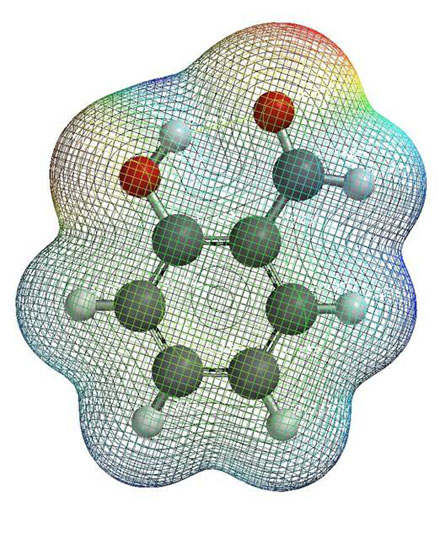Quantum Chemistry
Over the last years the calculation of molecular properties, especially of spectra, has become an important tool for the experimental chemist. Thus, we are using all methods of modern computational chemistry (MP2, CCSD(T), CASSCF, DFT etc.) for the interpretation of our experimental results. The fruitful interplay between theory and experiment has become a major source of innovation in our group and resulted in many cooperations with theoretically oriented research groups. Without support by theory the interpretation of complex spectra is almost impossible. On the other hand, exact experimental data are necessary to evaluate and improve theoretical methods.
 For the study of weakly interacting systems, we use the Multiple Minima Hypersurface (MMH) approach. It was first introduced in 1998 with the study of the pH-dependent equilibria of 2,4-diamino-5-phenylthiazole tautomer molecules in water by Montero, Esteva et al.[1]
For the study of weakly interacting systems, we use the Multiple Minima Hypersurface (MMH) approach. It was first introduced in 1998 with the study of the pH-dependent equilibria of 2,4-diamino-5-phenylthiazole tautomer molecules in water by Montero, Esteva et al.[1]
This approach was developed by Prof Dr. Montero (LQCT) and coworkers with the original purpose of evaluating the thermodynamic association functions of various molecular clusters using the partition function.[1-3] In our group the MMH approach was introduced as a very useful and reliable tool for localizing the minima of hydrogen-bonded and weakly interacting systems. The MMH procedure provides a way to study the multiple possible molecular arrangements for a given system via the exploration of large numbers of automatically generated starting geometries. [4-6]
References:
- L. A. Montero, A. M. Esteva, J. Molina, A. Zapardiel, L. Hernandez, H. Marquez, A. Acosta, Journal of the American Chemical Society (1998), 120, 12023.
- L. A. Montero, GRANADA and Q programs for PC computers ed., 1996.
- L. A. Montero, J. Molina, J. Fabian, International Journal of Quantum Chemistry (2000), 79, 8.
- E. Sanchez; M. Studentkowski; L.A Montero; W.Sander. ChemPhysChem (2005), 6(4), 618-624.
- E. Sanchez; L. George; L.A Montero; W.Sander. 1:2 Journal of Physical Chemistry A (2004), 108(52), 11846-11854.
- L. George; E. Sanchez; W.Sander. Journal of Physical Chemistry A (2003), 107(35), 6850-6858.

